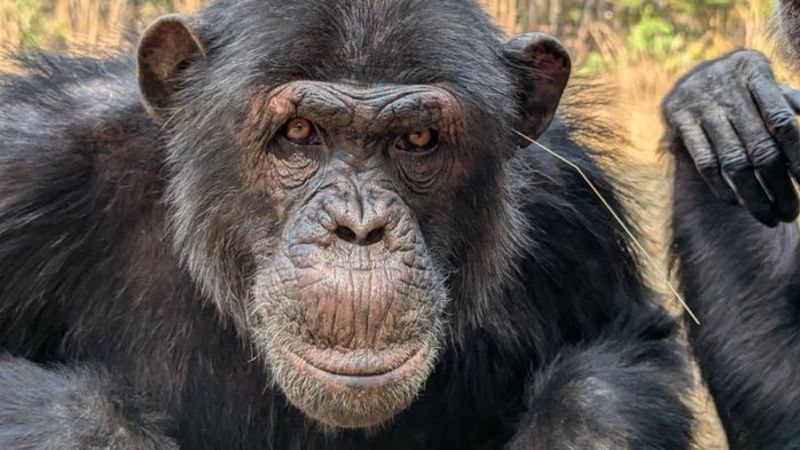In a remarkable piece of research, chimpanzees residing in a sanctuary located in Zambia have been observed exhibiting a unique behavior that resembles a “fashion trend” — the act of dangling blades of grass and sticks from their ears and backsides. This intriguing behavior emerged around 2010, when researchers at the Chimfunshi Wildlife Orphanage Trust made the initial observation. A female chimpanzee was specifically noted for beginning to sport these artifacts, prompting other members of her social group to follow suit, showcasing an example of social learning as described by Ed van Leeuwen, an assistant professor of behavioral biology at Utrecht University in the Netherlands.
Van Leeuwen explained that no evidence indicated the chimps were using the grass or sticks for itch relief or alleviating pain. Instead, these behaviors appeared to be leisurely acts, indicating that the chimpanzees were quite relaxed as they engaged in this newfound trend. The fact that they were at ease amid this behavior led Van Leeuwen to categorize it as more of a social tradition than a necessity, signifying a level of cultural expression among these primates.
Interestingly, another group of chimpanzees within the same sanctuary began to demonstrate similar behaviors more than ten years later, incorporating objects into their rectums too. Notably, this second group was situated roughly nine miles away from the first, suggesting that direct imitation from the initial group was unlikely. This prompted Van Leeuwen to ponder the influence of the caregivers interacting with both chimpanzee groups. It was discovered that staff members responsible for one part of the sanctuary had developed a habit of cleaning their ears with twigs, a practice that was absent among caregivers in another area.
Van Leeuwen theorized that the chimpanzees from the first group observed their caregivers cleaning their ears and adapted this behavior over time, leading to its eventual popularization across their group. Following this, he posits that caregivers influenced the second group later on, leading to their own variation of the behavior, which included inserting sticks into their rectums — a behavior likely rooted in mimetic learning.
“This is a trend that goes viral by means of social learning,” Van Leeuwen stated, highlighting a fascinating aspect of primate behavior. He provided an additional example from a zoo in the Netherlands, where a female chimpanzee began to walk as if she were carrying an imaginary baby, an ability that all the other female chimps soon emulated. New females introduced to the group were more readily accepted if they adhered to this behavioral norm, reinforcing the societal aspect of these actions.
Van Leeuwen described these behaviors as critical to establishing social bonds within the chimp community, paralleling human social interactions. The observed behavior typically took place during leisure hours, indicating that these chimpanzees enjoyed ample free time to socialize, groom each other, and play due to their lack of threats from predators or competing groups, a stark contrast to their wild counterparts.
He speculated that while the behaviors observed were more pronounced in sanctuary living, wild chimpanzees might have the potential to develop similar behaviors, albeit with less opportunity for documentation. Van Leeuwen plans to further his research by examining the chimpanzees’ capacity for innovation, particularly in developing foraging methods, trying to investigate their potential for cumulative culture similar to humans.
This study drew attention not just within the scientific community, but also garnered insight from experts like Elodie Freymann of Oxford University, who highlighted the research’s significance in understanding cultural behaviors in not only chimpanzees but possibly across non-human species. She expressed excitement about the implications of chimpanzees potentially copying from human caregivers, leading to questions of interspecies interactions and learning mechanisms in primates.
Freymann emphasized the groundbreaking nature of the findings, indicating that such research may illuminate not just chimpanzee behavior but also broader evolutionary implications regarding how culture transmits among species. This study underscores the incredible complexity of social learning, suggesting that our understanding of primate behavior and culture, while already rich, may have just begun to scratch the surface of deeper layers yet to be discovered.












